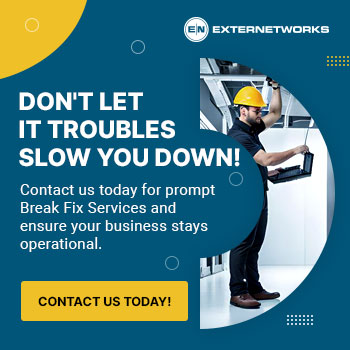Choosing the Right Break Fix IT Provider: Key Factors to Consider

A reliable IT provider is crucial for maintaining smooth operations in today’s fast-paced business landscape. But how do you ensure you choose the right break-fix IT provider that meets your organization’s specific needs?
With technology evolving rapidly, businesses increasingly rely on IT systems to drive growth and efficiency. This reliance highlights the importance of selecting a trustworthy break-fix IT provider who can swiftly address any technical issues that may arise.
Selecting the right break-fix IT provider goes beyond just fixing immediate problems. It involves considering various key factors to ensure a long-term partnership that aligns with your business objectives. Whether you are a small startup or a large corporation, making the right choice can significantly impact your overall productivity and success.
Let’s explore the essential factors to consider when choosing the perfect break-fix IT provider for your organization.
Why are Managed Services Thriving in Today’s Market?
Managed services are thriving because businesses increasingly seek to outsource their IT needs to specialized firms to save time and money. Managed service providers offer expertise in various technical areas, allowing companies to focus on their core operations without worrying about managing their IT infrastructure.
Additionally, the rise of cloud computing and remote work has increased the demand for managed services to ensure seamless and secure operations. This trend is expected to continue as companies look to streamline their operations and stay competitive in a rapidly changing digital landscape.
Furthermore, managed services provide a proactive approach to IT management, distinguishing them from traditional break-fix models where services are only engaged after issues occur. By employing preventive strategies, managed service providers (MSPs) can identify potential problems before they escalate into significant outages, thereby reducing downtime and mitigating risks. This shift from reactive to proactive management enhances system reliability and contributes to higher customer satisfaction and trust.
Transitioning from Break/Fix to a Managed Services Model
As businesses increasingly recognize the limitations of the break/fix model, many are making the strategic decision to transition to a Managed Services Provider (MSP) model. This shift enhances operational efficiency and provides a more predictable and cost-effective approach to IT management. Here are some key steps and considerations to facilitate a successful transition:
Evaluate Your Current IT Needs
Before making the switch, it’s essential to conduct a thorough assessment of your current IT infrastructure and support needs. Identify areas where the break/fix model has fallen short, such as recurring issues, high repair costs, or inadequate support during critical times. This evaluation will help you understand your organization’s specific challenges and the IT services that can best address those needs.
Understand the Cost Implications
One of the most compelling advantages of transitioning to managed services is the predictable pricing structure. Unlike the unpredictable costs associated with break/fix services, managed services typically involve a flat monthly fee, allowing businesses to budget more effectively. Analyze your historical IT spending to gauge the potential savings and ROI that a managed services model could deliver. Keep in mind that while the initial investment may seem higher, the long-term benefits such as reduced downtime and fewer emergency repairs often lead to significant cost savings.
Define Service Level Agreements (SLAs)
A critical component of managed services is the establishment of Service Level Agreements (SLAs). These contracts outline the specific services provided, response times, and performance metrics that the MSP commits to meeting. When transitioning, ensure your SLAs are tailored to meet your organization’s unique needs and expectations. A well-defined SLA not only clarifies the level of service you can expect but also holds the service provider accountable for delivering quality support.
Foster Vendor Relationships
Transitioning to managed services often leads to improved vendor relationships. Unlike the limited interaction typically seen in the break/fix model, a managed service relationship is built on collaboration and ongoing communication. As you shift, invest time in building a strong partnership with your MSP. Regular check-ins and performance reviews can help align your business objectives and the services being provided.
Emphasize Proactive Monitoring and Maintenance
One of the hallmarks of managed services is the proactive approach to IT management. Unlike break/fix, where issues are only addressed reactively, managed services focus on continuous monitoring and preventive maintenance. This shift can significantly reduce the risk of unexpected downtime and costly repairs. Encourage your in-house IT team to work alongside the MSP to develop a proactive maintenance strategy that keeps your systems running smoothly and efficiently.
Prepare for Change Management
Transitioning to a managed services model represents a significant change for your organization. To ensure a smooth transition, prepare your employees for this shift. Provide training sessions to help them understand the new processes and technologies that will be implemented. Communicate the benefits of the change such as improved efficiency, reduced stress on in-house teams, and enhanced cybersecurity measures to foster buy-in from your staff.
Continuous Improvement and Feedback
Once the transition is complete, it’s important to continuously evaluate the managed services relationship’s effectiveness. Regular feedback loops with your MSP can help identify areas for improvement and ensure that the services evolve to meet your changing business needs. This ongoing dialogue is crucial for maximizing the benefits of the managed services model and achieving your organization’s long-term IT goals.
The transition from break/fix to a managed services model can be a game-changer for businesses looking to enhance efficiency, reduce costs, and mitigate risks. By carefully evaluating your needs, establishing strong SLAs, fostering partnerships, and preparing your team for change, your organization can succeed in an increasingly digital landscape.
Choosing the Right Managed IT Provider For Break-Fix Services: Key Factors to Consider
When choosing the right managed break/fix IT provider, evaluating several key factors is essential to ensure that the provider can meet your specific needs and deliver reliable and effective support. Here are the critical factors to consider:
- Experience and Expertise: Assess the provider’s industry experience and expertise with the specific technologies and systems your business uses. Look for a provider with a proven track record of resolving issues similar to those your organization may encounter.
- Service Level Agreements (SLA): Inquire about SLA availability, even in a break/fix model. Determine whether the provider can offer commitments around response times and resolution times, which can mitigate risks related to downtime.
- Reputation and References: Research the provider’s reputation in the market. Seek client references and read testimonials or case studies to gauge customer satisfaction and the quality of service provided.
- Response Time: Understand how quickly the provider can respond to support requests. Fast response times are crucial for minimizing disruptions to your business operations.
- Cost Transparency: Ensure that the provider offers clear pricing structures. Understand their hourly rates, parts costs, and potential additional fees to avoid surprises when issues arise.
- Range of Services: Evaluate the breadth of services the provider offers. A comprehensive service offering can be beneficial in case your IT needs evolve or expand in the future.
- Technical Support Availability: Check the availability of support. Determine whether they provide 24/7 support and how they handle after-hours emergencies.
- Scalability: Consider whether the provider can scale its services to accommodate your business growth. This flexibility can be vital if your IT needs change over time.
- Communication and Relationship: Look for a provider prioritizing strong communication and fostering a reliable, professional relationship. Clear communication is crucial for effective issue resolution and ongoing support.
- Proactive vs. Reactive Support: While break/fix is inherently reactive, some providers may offer elements of proactive maintenance. Evaluate whether the provider has any measures in place to prevent issues before they arise.
- On-Site vs. Remote Support: Determine whether the provider can offer both on-site and remote support to handle various situations effectively.
- Compliance and Security: Ensure the provider understands compliance requirements relevant to your industry and can address security concerns effectively.
By carefully assessing these factors, businesses can make a more informed decision when selecting a break/fix IT provider that aligns with their specific needs and expectations.
Conclusion
In today’s fast-paced business environment, choosing an IT support model can significantly impact operational efficiency and cost management. While break-fix IT services may seem appealing due to their initial cost-effectiveness, it is crucial to recognize the inherent challenges that come with this reactive approach. Prolonged response times, unpredictable expenses, and a lack of proactive strategy can lead to detrimental downtime and inefficiencies that ultimately cost your business more in the long run.
When considering a Managed break-fix IT provider, it’s essential to evaluate their pricing structure and responsiveness, expertise, and overall service quality. Look for providers who can demonstrate a strong understanding of your industry and IT needs and a history of reliable support. Certifications, client testimonials, and case studies can provide invaluable insights into a provider’s capability and customer satisfaction.
The right managed service provider can offer you the peace of mind that comes with proactive maintenance and support, allowing you to focus on growing your business without IT headaches. As you weigh your options, remember that investing in comprehensive and scalable IT services today can yield significant returns in efficiency and productivity tomorrow. Don’t hesitate to consult with experts who can guide you through the transition and tailor solutions to your unique business needs. In this rapidly evolving digital landscape, choosing the right IT partner is not just an option; it’s a strategic necessity for sustained success.
to Contact Us




